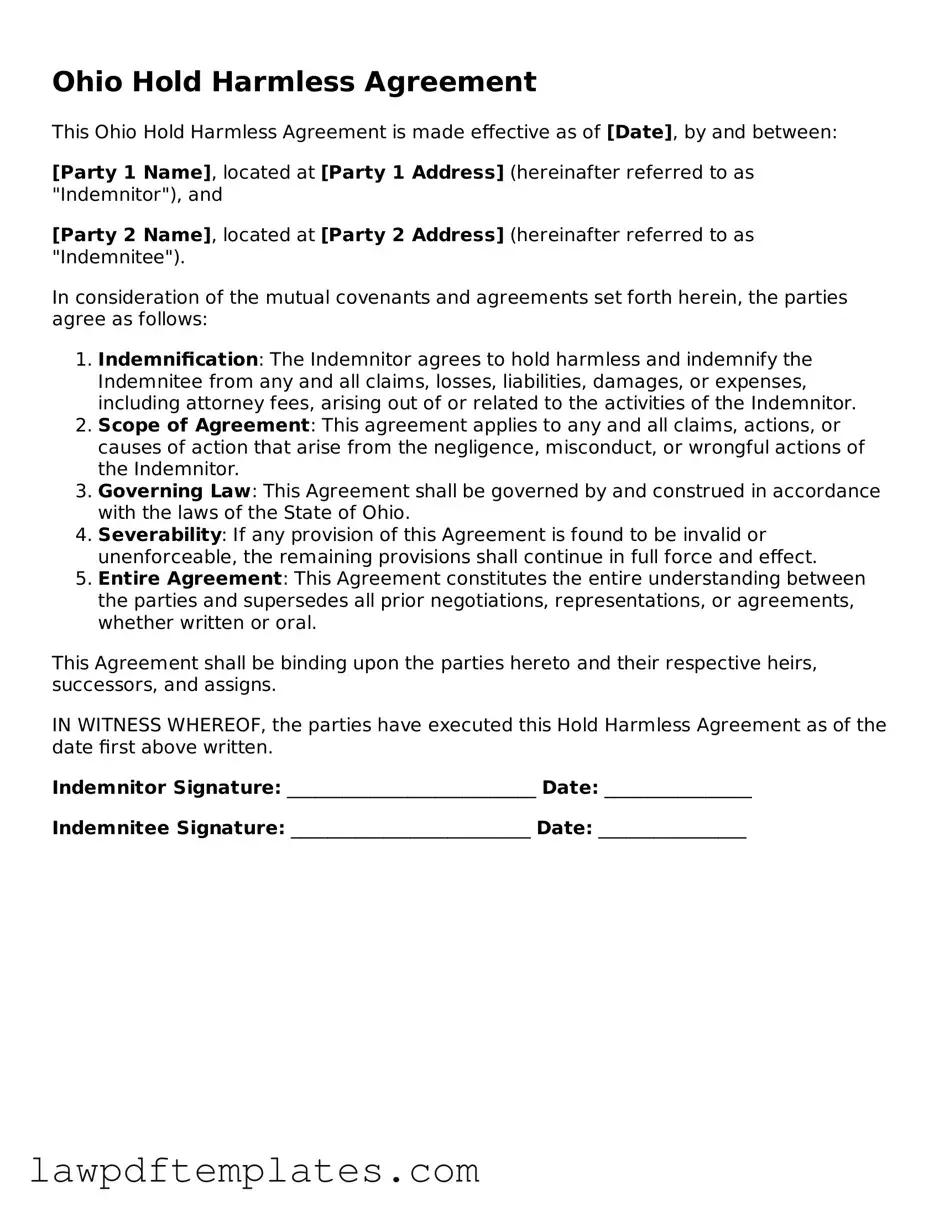Ohio Hold Harmless Agreement
This Ohio Hold Harmless Agreement is made effective as of [Date], by and between:
[Party 1 Name], located at [Party 1 Address] (hereinafter referred to as "Indemnitor"), and
[Party 2 Name], located at [Party 2 Address] (hereinafter referred to as "Indemnitee").
In consideration of the mutual covenants and agreements set forth herein, the parties agree as follows:
- Indemnification: The Indemnitor agrees to hold harmless and indemnify the Indemnitee from any and all claims, losses, liabilities, damages, or expenses, including attorney fees, arising out of or related to the activities of the Indemnitor.
- Scope of Agreement: This agreement applies to any and all claims, actions, or causes of action that arise from the negligence, misconduct, or wrongful actions of the Indemnitor.
- Governing Law: This Agreement shall be governed by and construed in accordance with the laws of the State of Ohio.
- Severability: If any provision of this Agreement is found to be invalid or unenforceable, the remaining provisions shall continue in full force and effect.
- Entire Agreement: This Agreement constitutes the entire understanding between the parties and supersedes all prior negotiations, representations, or agreements, whether written or oral.
This Agreement shall be binding upon the parties hereto and their respective heirs, successors, and assigns.
IN WITNESS WHEREOF, the parties have executed this Hold Harmless Agreement as of the date first above written.
Indemnitor Signature: ___________________________ Date: ________________
Indemnitee Signature: __________________________ Date: ________________
